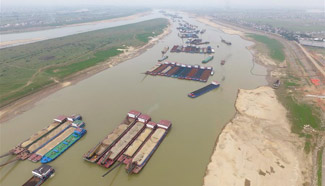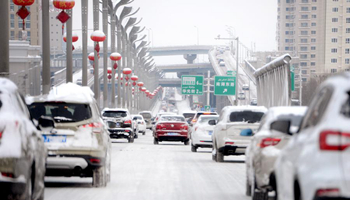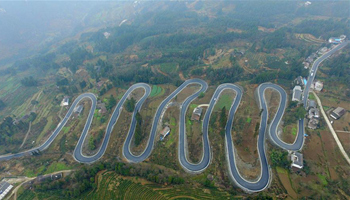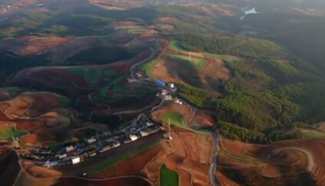LANZHOU, Feb. 20 (Xinhua) -- At around 7 a.m., Yang Shishi pulled up to his township station, dragging a cart heavy with 50 kg of Chinese chives. He has come to this same station for almost two decades, so that he can catch one of the green-colored train into the city.
Yang, who is in his 70s, is a farmer in poverty-stricken Pan'an township, Tianshui city in northwest China's Gansu Province.
The slow train is the only one that stops at Pan'an, and it takes an hour to travel the 60 km to Tianshui. It has been running for 63 years, picking up passengers from 13 stations in one of China's most impoverished hinterlands.
Unlike shiny bullet trains that whoosh past new stations in big cities and counties nationwide, slow, decades-old trains are still very popular among rural residents in impoverished areas, as a cheap and convenient means of transportation.
The train passes through three counties and a district. It does a round trip between Longxi County and Tianshui each day and has 13 stops. The single 146-km trip takes three hours and costs 9.50 yuan (1.40 U.S.dollars).
These trains have no aircon and are often crammed with people and huge bags bulging with goods. For many rural areas, however, these trains are a life line; a link to the outside world and to wealth.
Other farmers like Yang take the train to the city. "Summer is our busiest season," said train conductor Du Cuilan. "Farmers bring their strawberries, cherries, peaches and grapes. The carriage becomes colorful and the air is filled with the sweet aroma of fruit."
For An Xuegen, 55, a farmer from another township, the train holds memories..
Thirty-six years ago, he picked up his fiance from a neighboring town and they took the train to go to their wedding ceremony.
"There was no aircon and the seats were made of wood. We had to stand all the way," recalled An.
Over the three decades, An and his wife have often taken the train and witnessed its changes.
In 2015, Lanzhou Railway Bureau improved the service on the train and furnished the interior.
New seat covers and paintings were installed. During Chinese New Year, performances are arranged in the carriage.
Despite the upgrade, the ticket price has stayed the same. "For the people who live in poverty or struggle financially, this means a lot," said Mu Chenghui, an official with Longxi railway.
"As long as there are people who need it, we will keep it running," said Mu.












